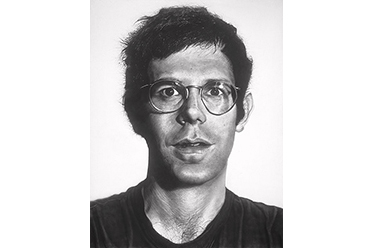 Portraits from one of America’s best-loved visual artists are now on display at the Museum of Contemporary Art as part of the Sydney International Art Series in Chuck Close: Prints, Process and Collaboration.
Portraits from one of America’s best-loved visual artists are now on display at the Museum of Contemporary Art as part of the Sydney International Art Series in Chuck Close: Prints, Process and Collaboration.
Famed for his highly inventive techniques used to paint the human face, Chuck Close is best known for his large-scale, photo-based portrait paintings, producing many iconic portraits of artists, celebrities and other well-known public figures including Brad Pitt, Kate Moss, Lou Reed, Roy Lichtenstein and President Obama.
He is also an accomplished printmaker and photographer whose work has been the subject of more than 200 solo exhibitions in more than 20 countries. Close’s work is characterised by the way he pushes these techniques to their limits and the high level of skill required in the production of these works, with some prints taking up to two years to realise.
This exhibition comprehensively surveys Close’s long involvement with the varied forms and processes of printmaking. It shows the artist’s range of invention in etching, aquatint, lithography, handmade paper, direct gravure, silkscreen, traditional Japanese woodcut, and reduction linocut.
It features images ranging from early mezzotints to monumental later works as well as water colour pigment prints and a new series of Jacquard tapestries. Consulting curator Glenn Barkley has worked with exhibition curator Terrie Sultan to include the painting Bob (1970) and a series of progressive proofs for Keith/Merzotint (1972) – held in the collection of the National Gallery of Australia.
Born in 1940 in Monroe, Washington, Close studied art at Everett Community College (1958-60), and completed his degree at the University of Washington, Seattle, in 1962. He continued his studies at the Yale Graduate School University, New Haven, Connecticut, during 1962-64. In 1964 he was awarded a Fulbright Grant to study for a year at the Academy of Fine Arts, Vienna. On his return he taught at the University of Massachusetts in Amherst (1965-67), and his first solo exhibition was held at the university in 1967.
Shortly afterwards Close left for New York, where he began a series of huge black and white portraits which were exhibited at the Bykert Gallery in 1969, and first shown abroad at the Neue Galerie, Aachen, Germany, in 1970. By mid-1970s he began using colour in his portraits. He was now showing his work regularly in group exhibitions, such as Documenta, Kassel, in 1972, and in solo exhibitions such as his 1973 showing at the Museum of modern Art (Projects Gallery), New York.
In 1977 his work was included in the exhibition Illusion and Reality which toured Australia, and Paris-New York, held at the Musée National d’Art Moderne, Centre Georges Pompidou, Paris. By this time Close had also established himself as a printmaker and photographer. In 1980 the Walker Art Center, Minneapolis, held a retrospective exhibition, Close Portraits – which toured major centres in the United States. In 1988, Close was paralysed from the neck down, but has recovered sufficiently to continue painting from a wheelchair. He lives and works in New York.
Chuck Close: Prints, Process and Collaboration is the largest exhibition of Close’s work ever presented in the southern hemisphere and is exclusive to Sydney. It is organised in association with the Parrish Art Museum, Water Mill, New York.
Chuck Close: Prints, Process and Collaboration
Museum of Contemporary Art, 140 George Street, The Rocks (Sydney)
Exhibition continues to 15 March 2015
Entry fees apply
For more information, visit: www.mca.com.au for details.
Image: Chuck Close, Bob (1970), synthetic polymer paint on canvas. National Gallery of Australia, Canberra. Purchased 1975. © Chuck Close, courtesy Pace Gallery
